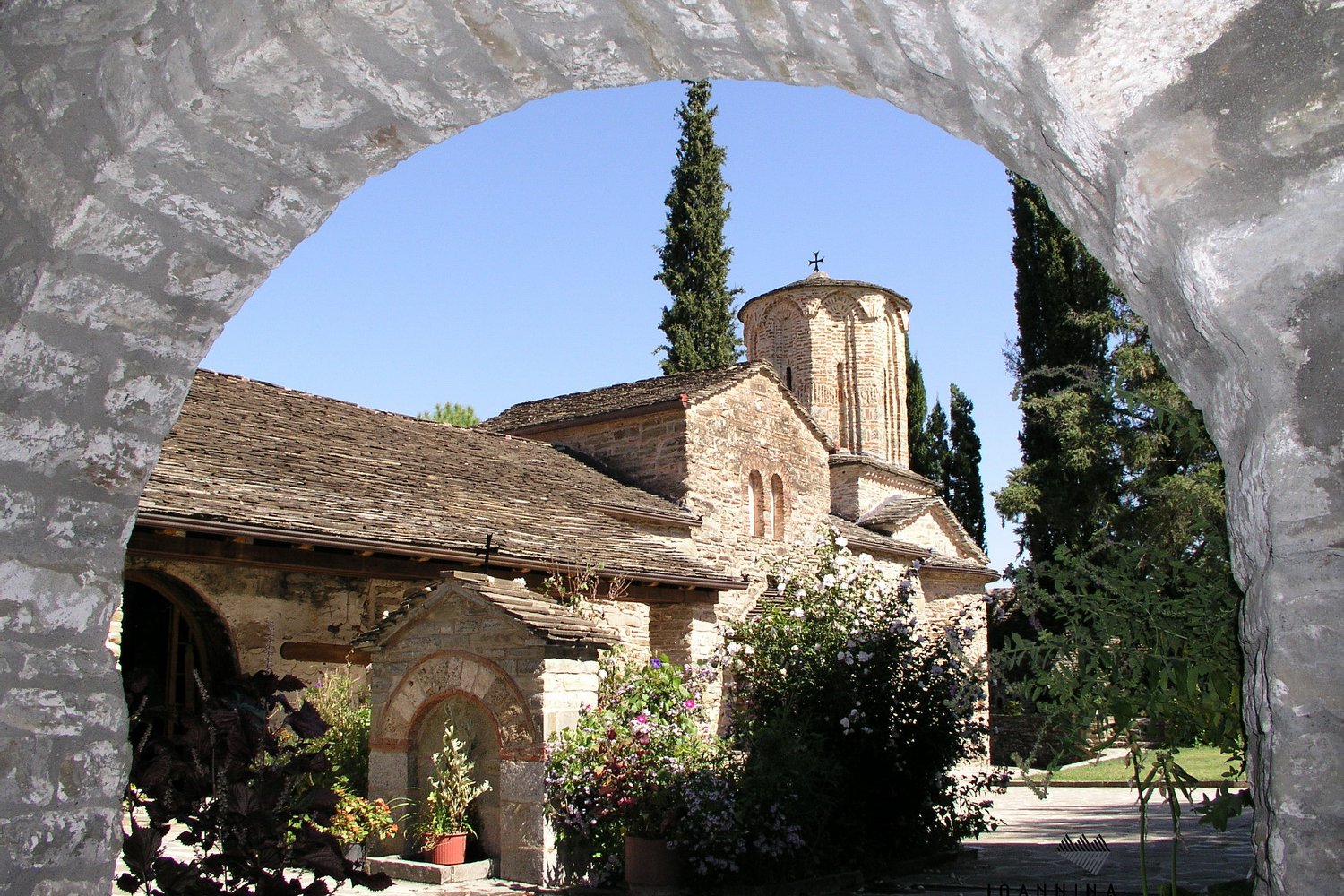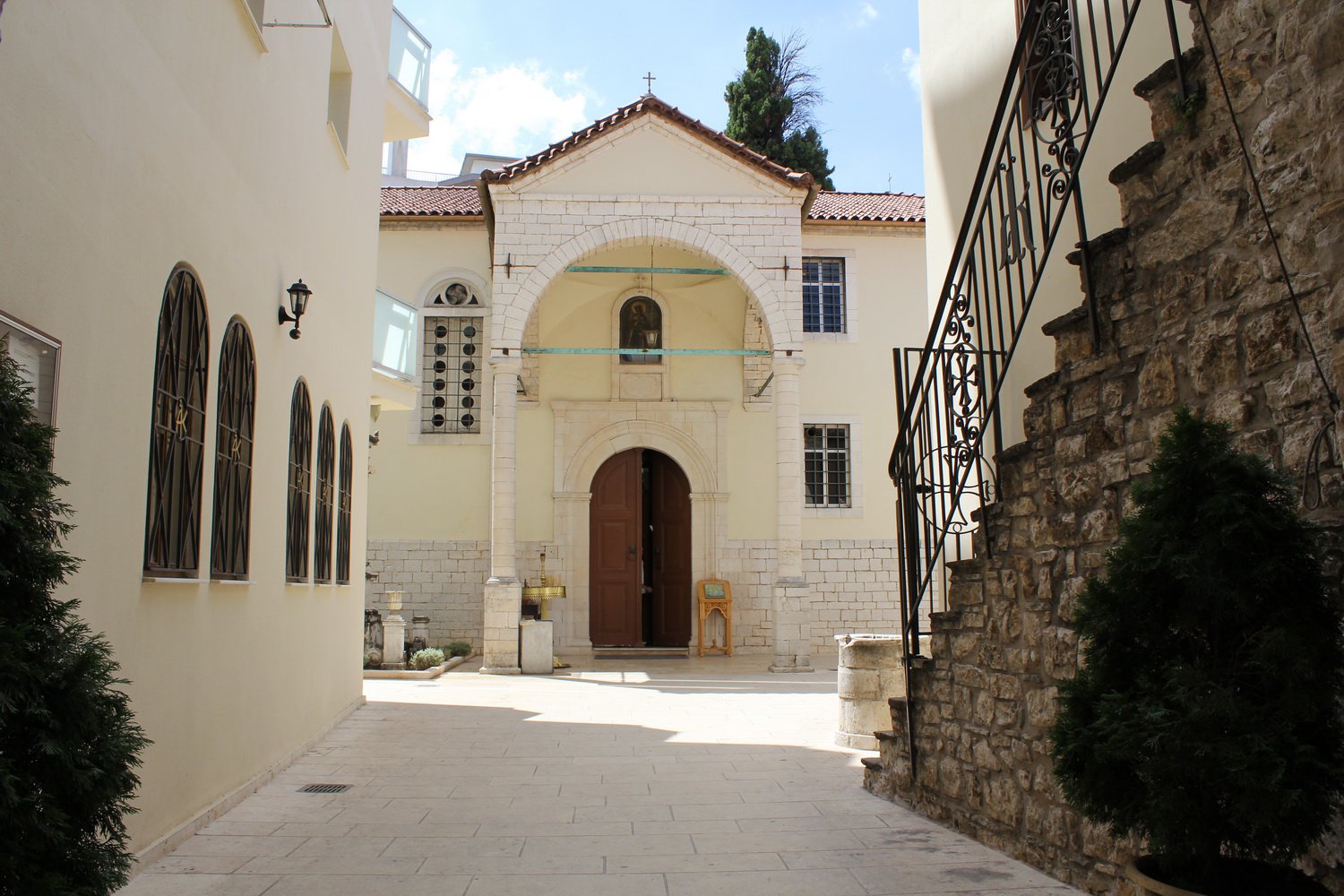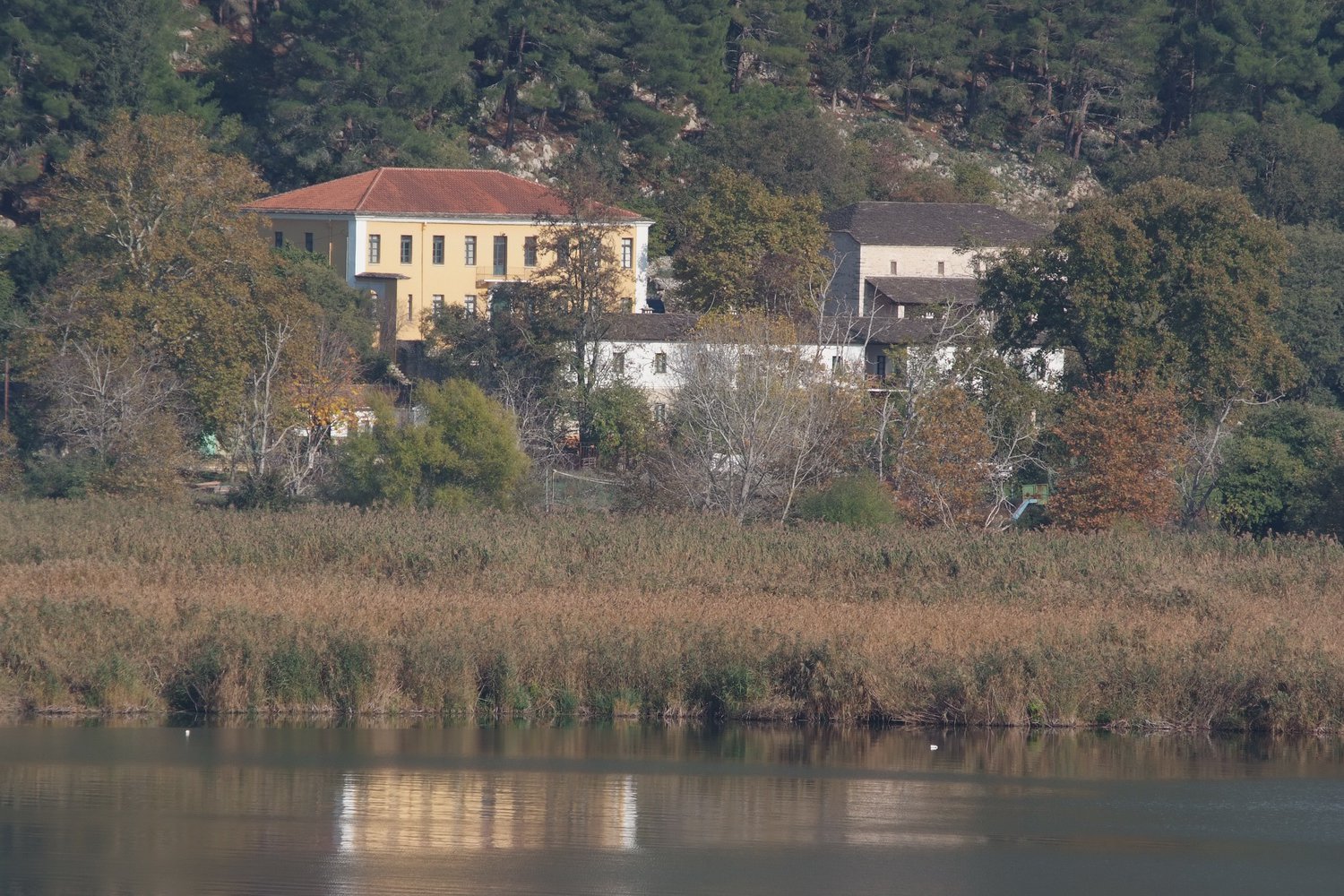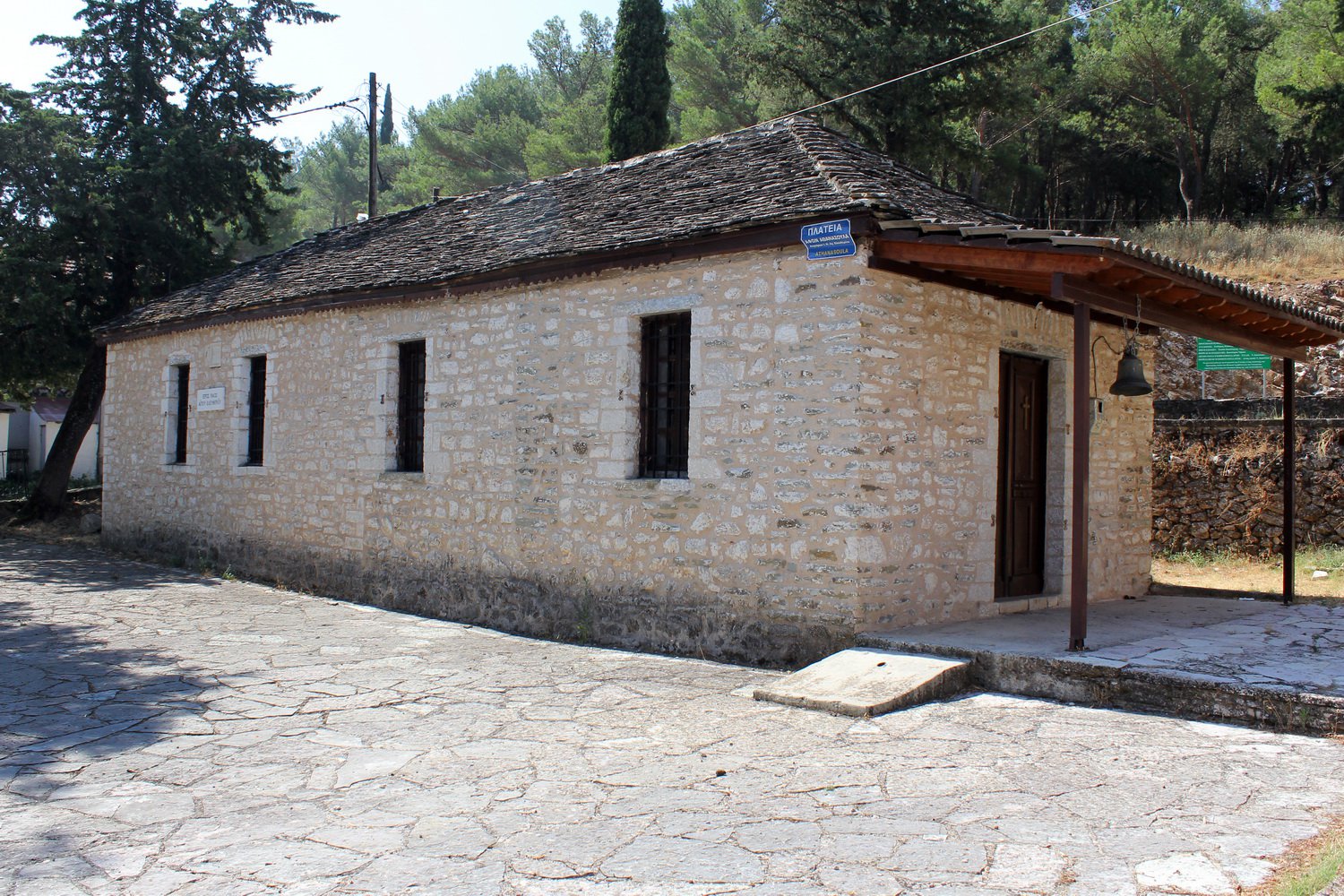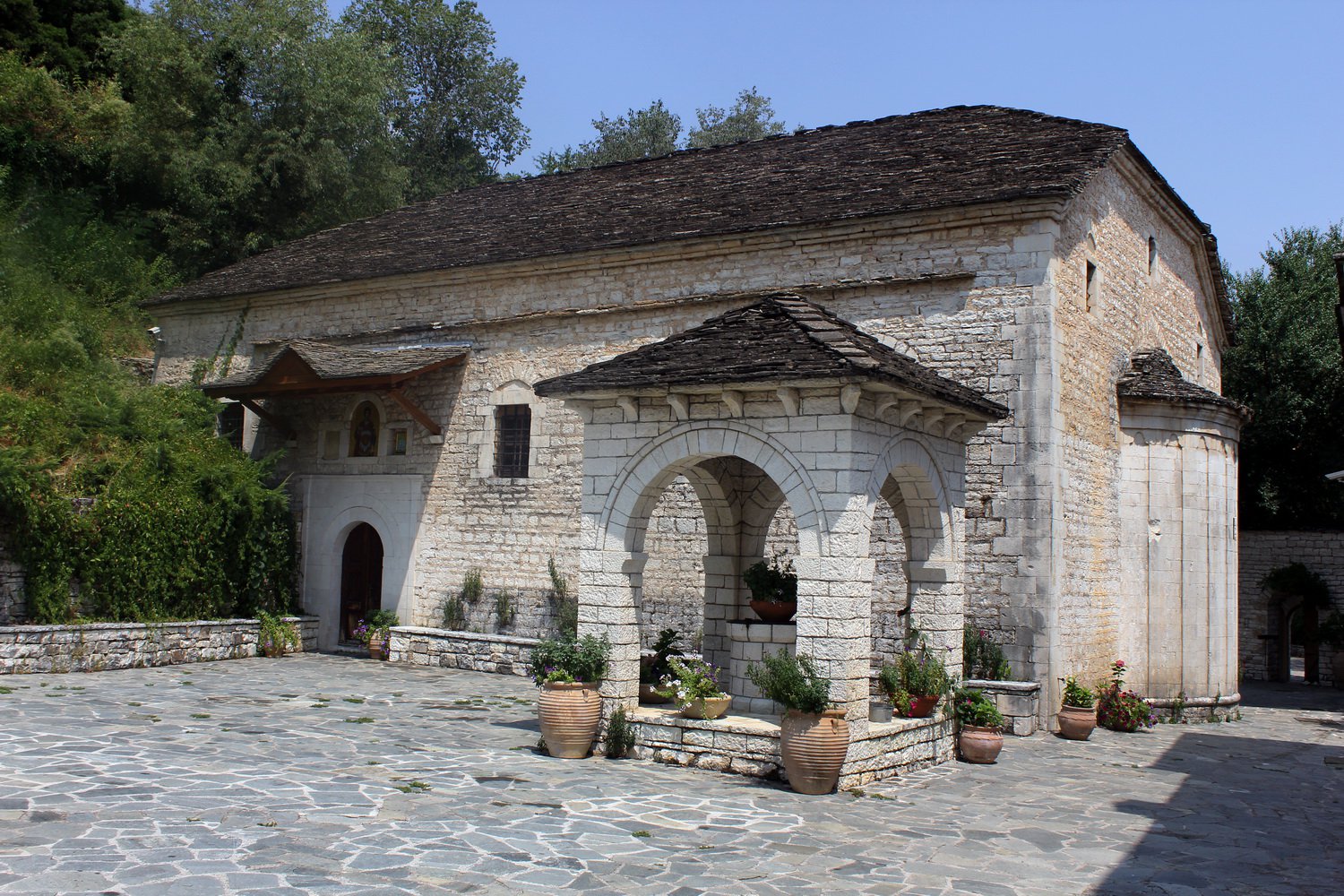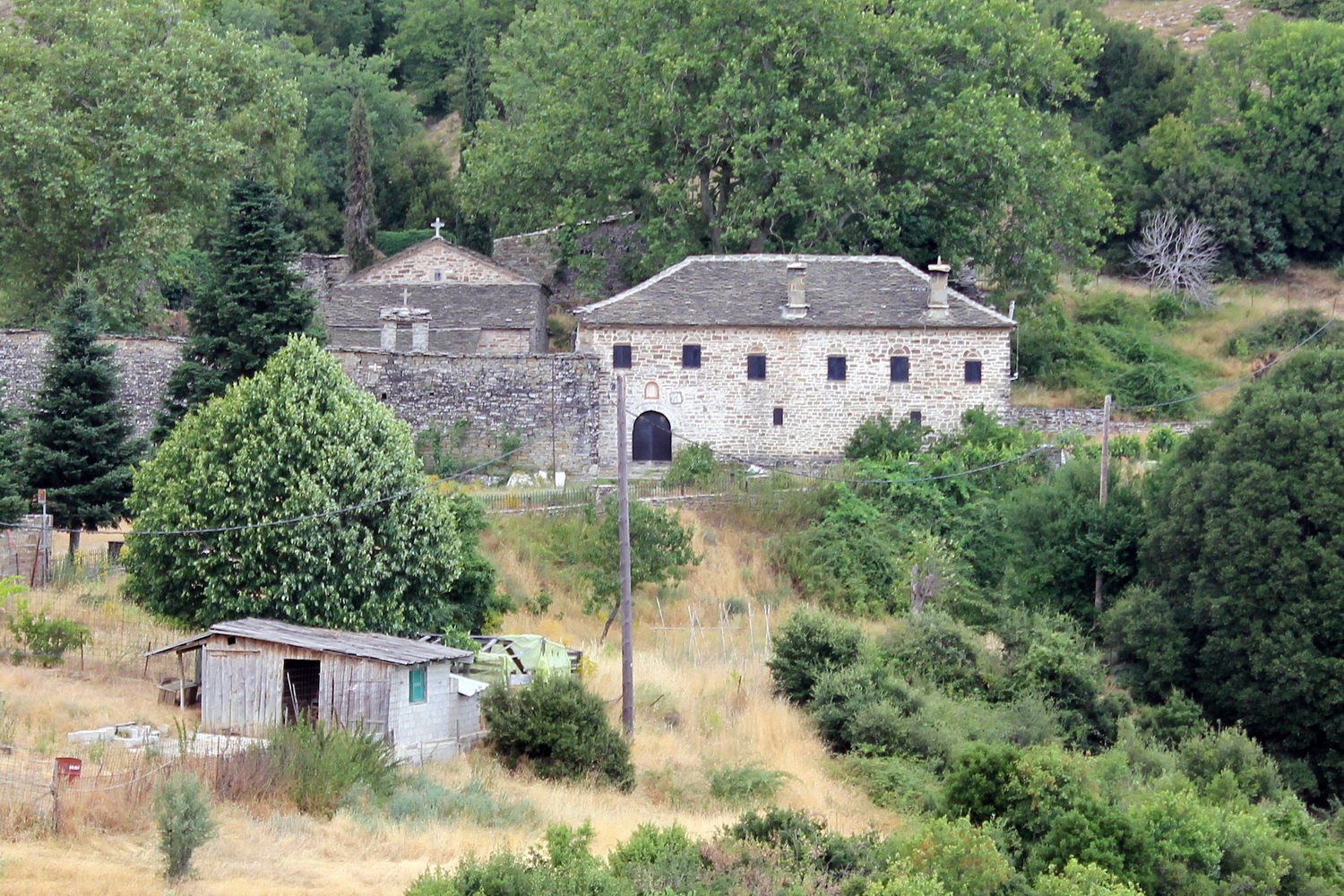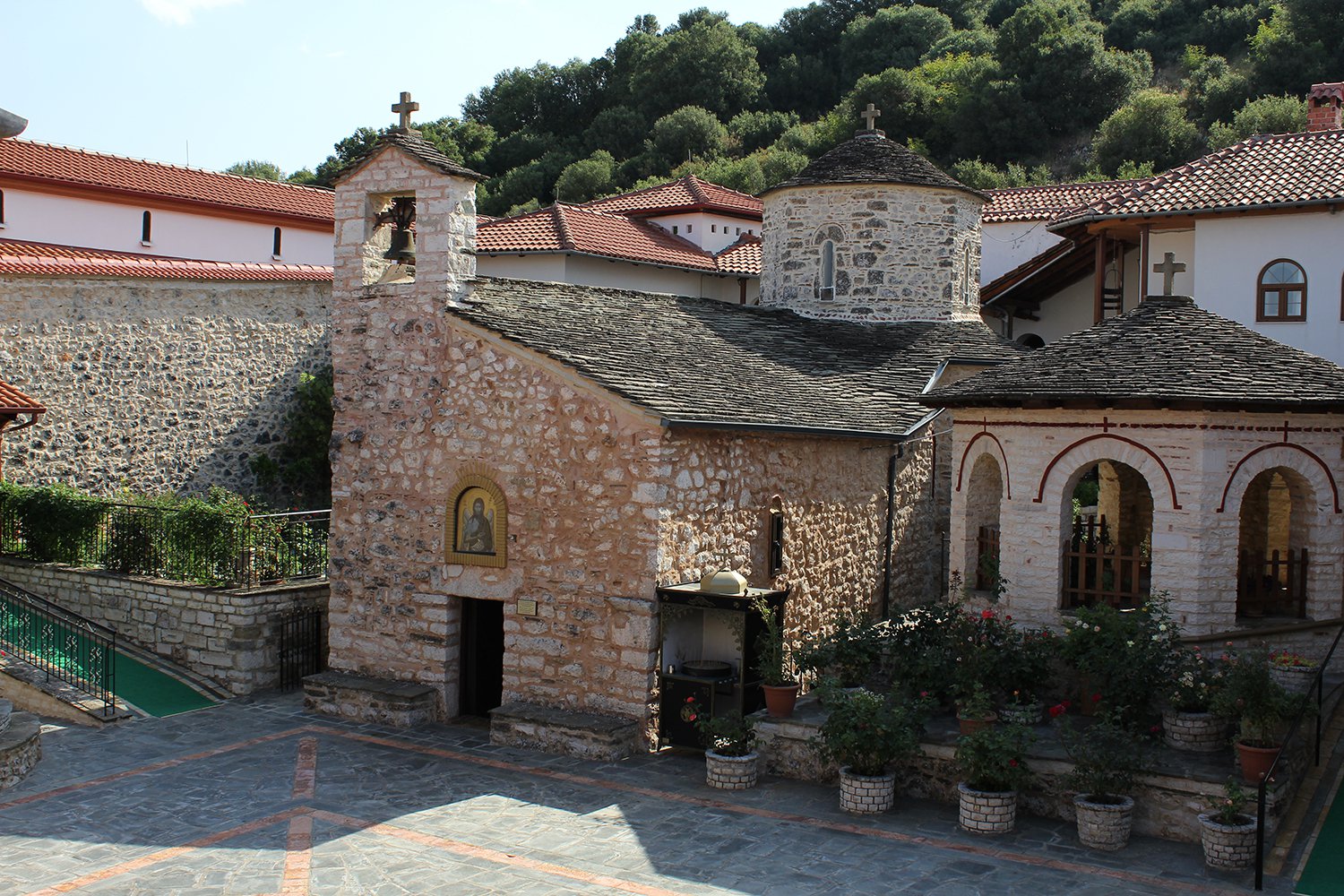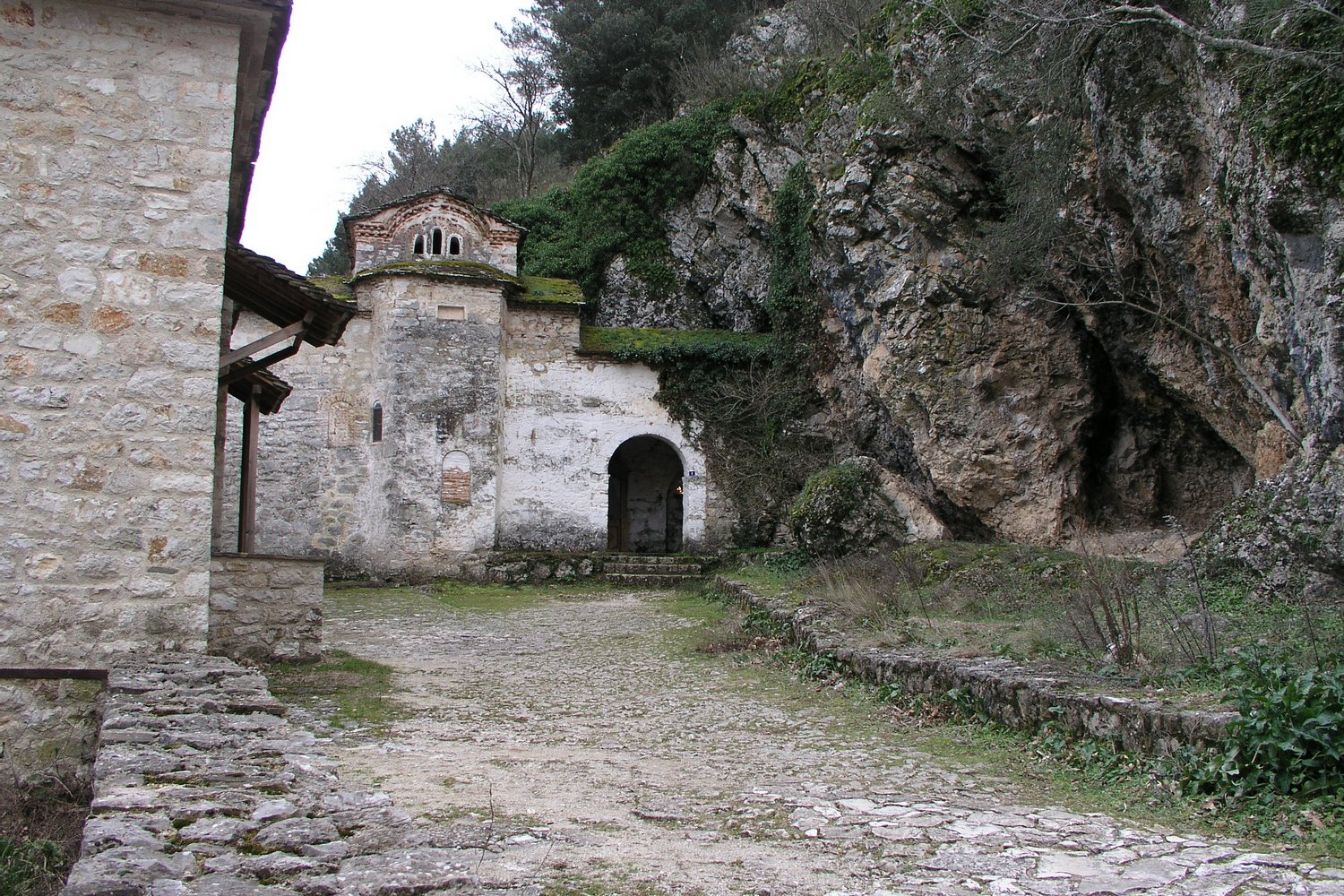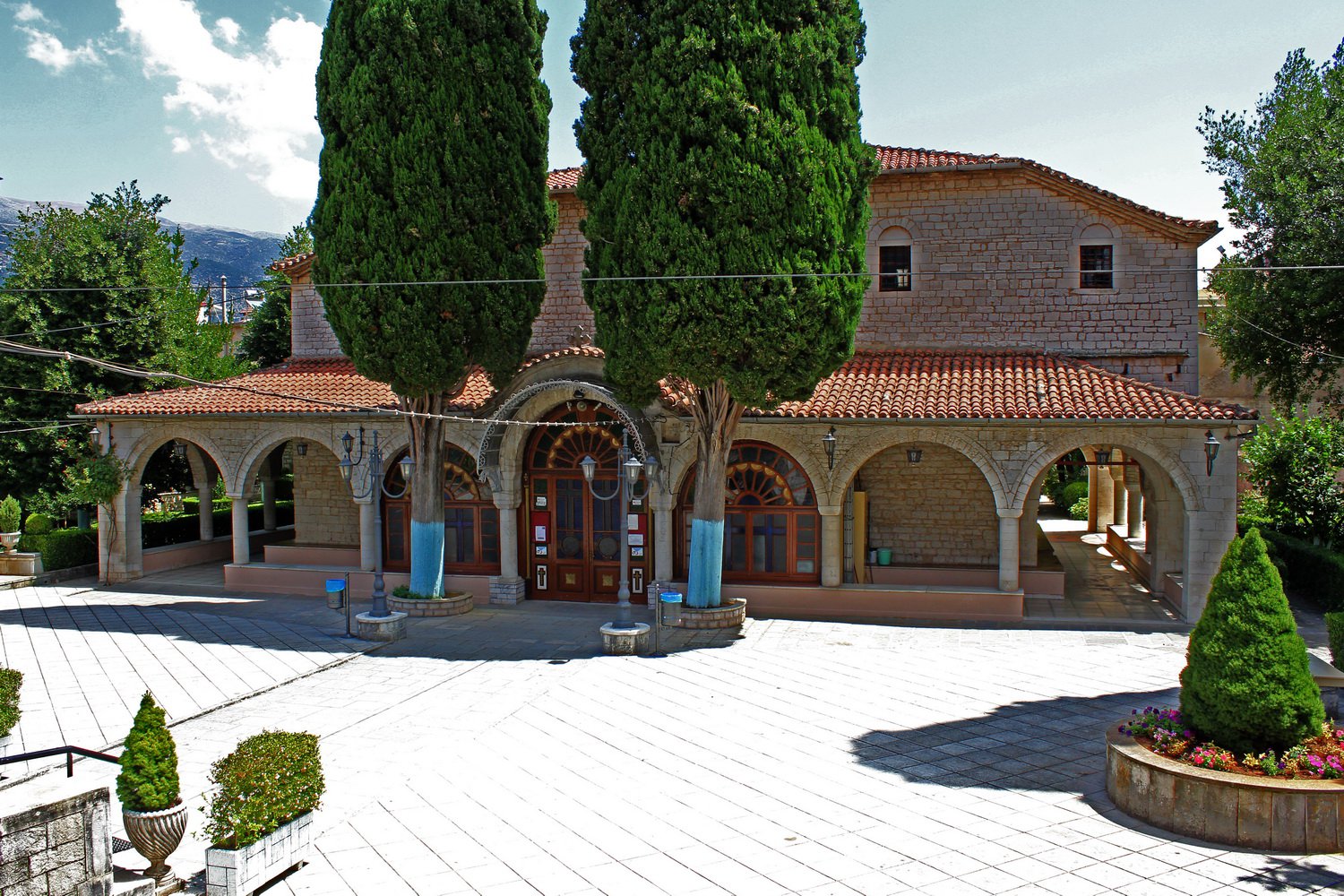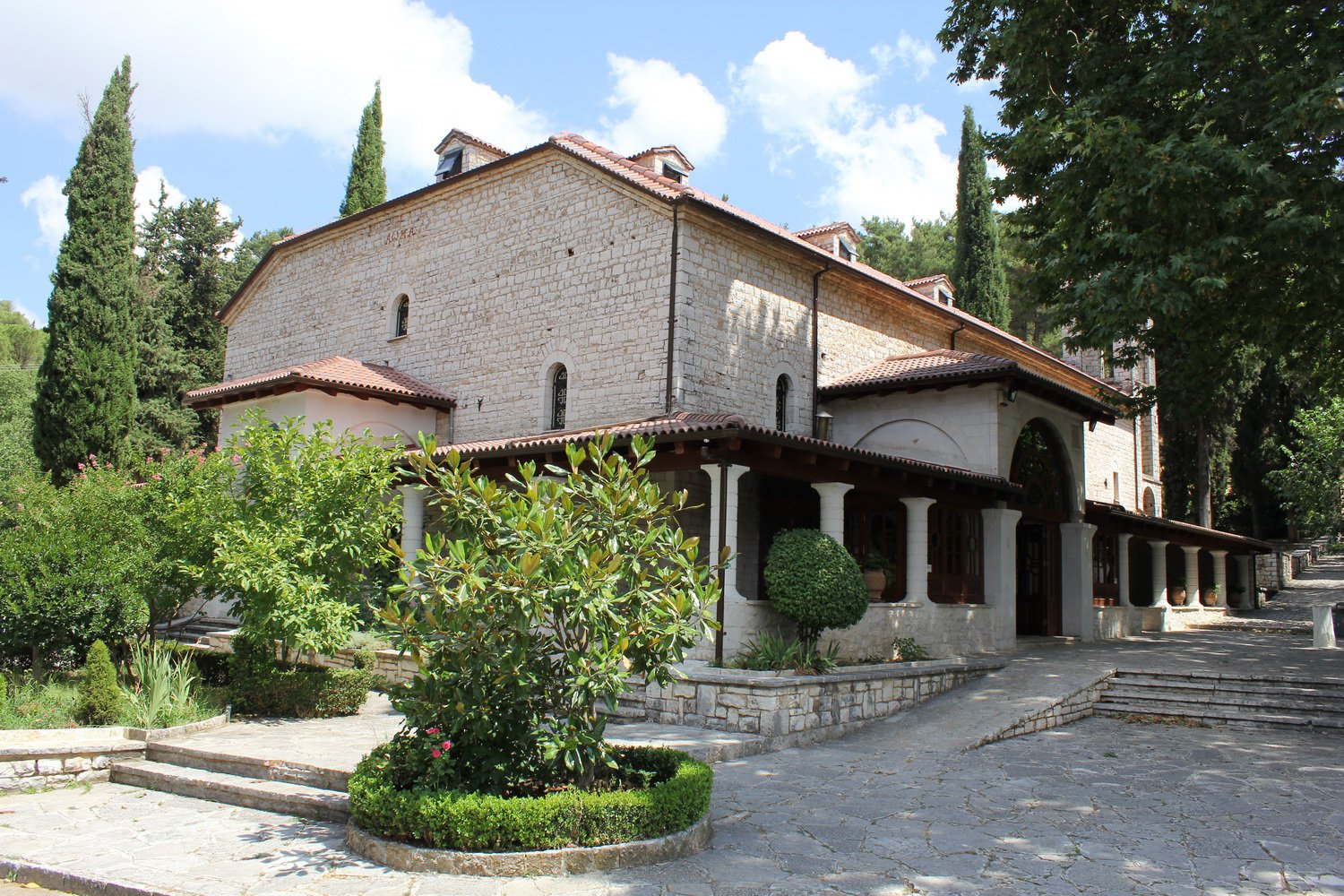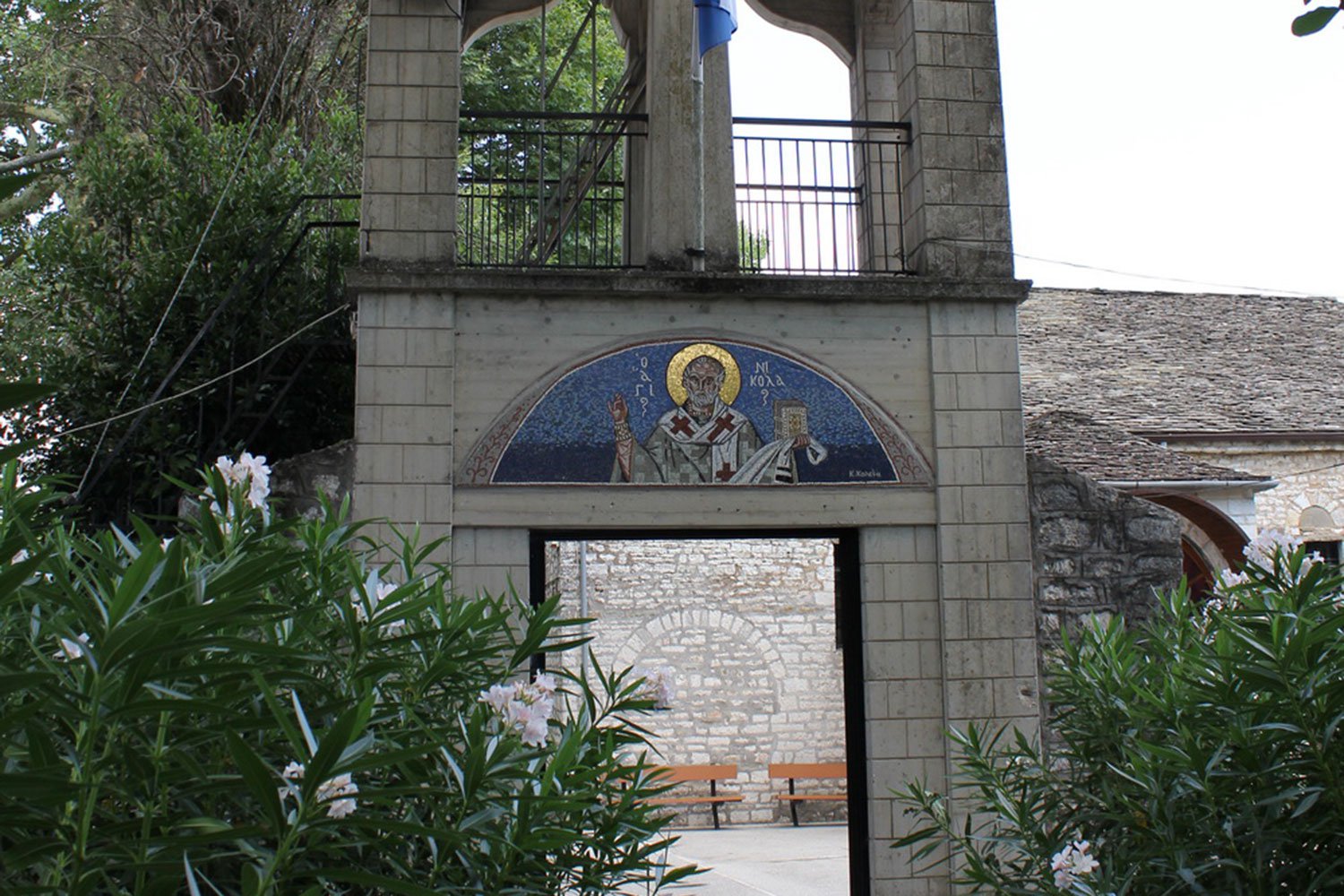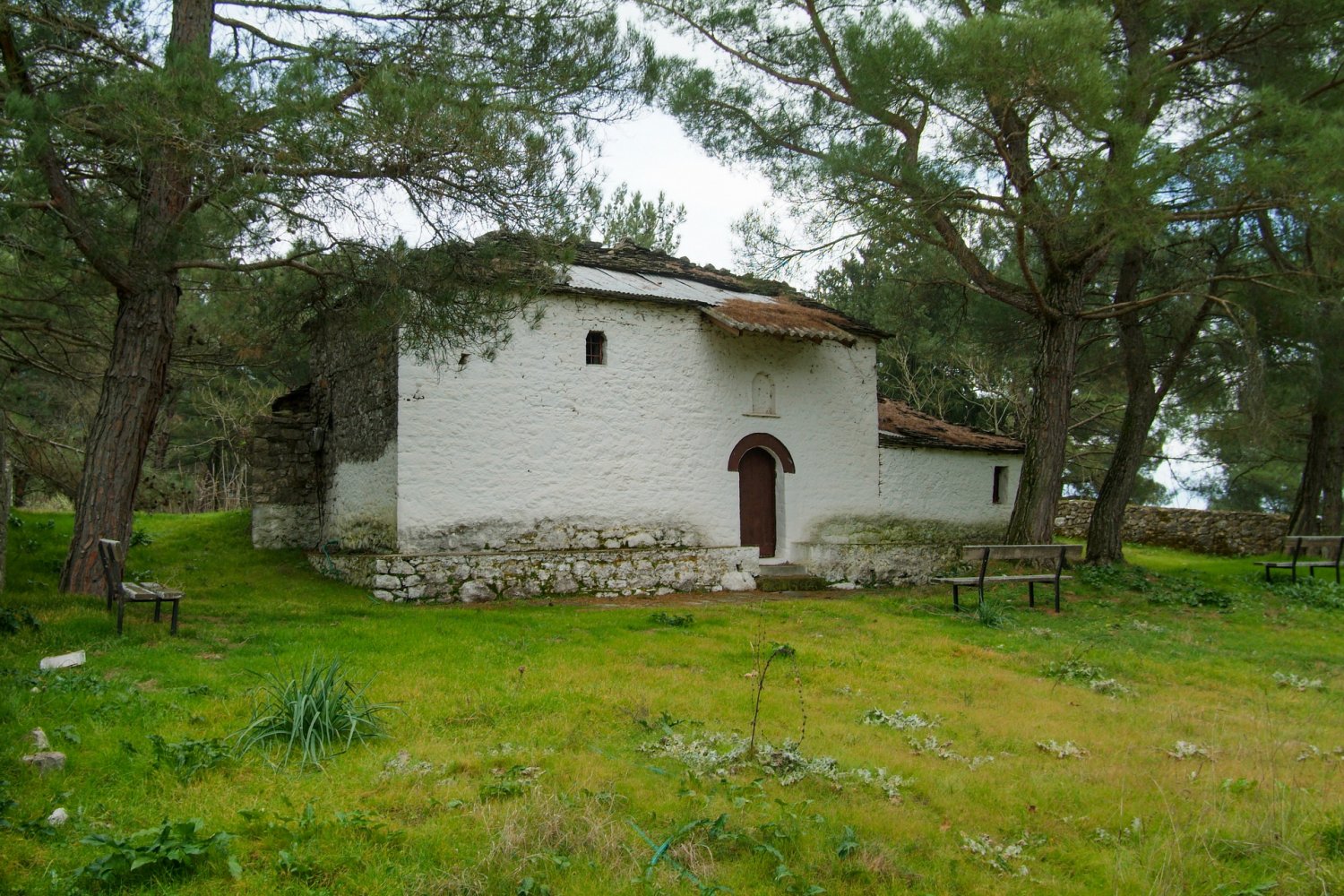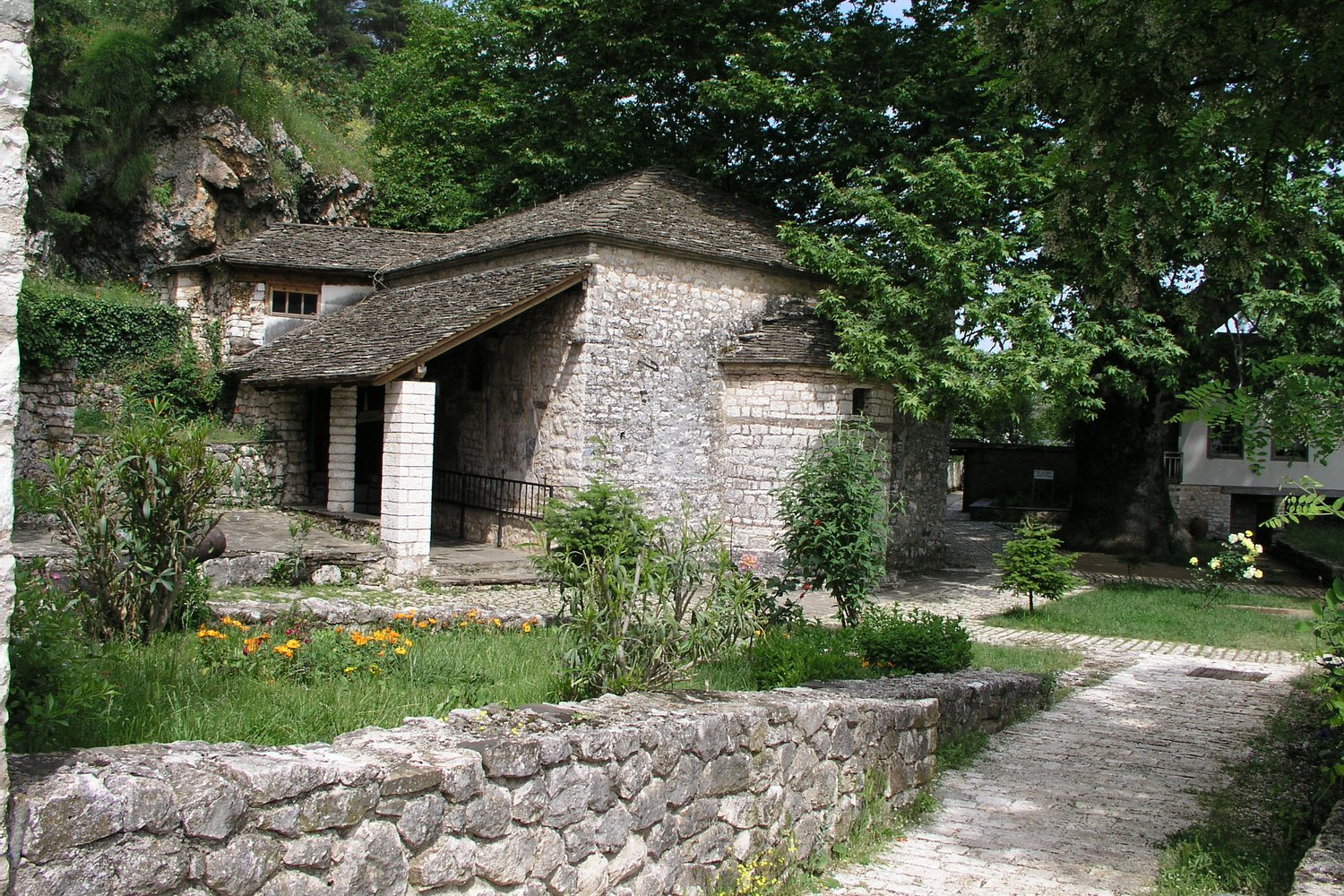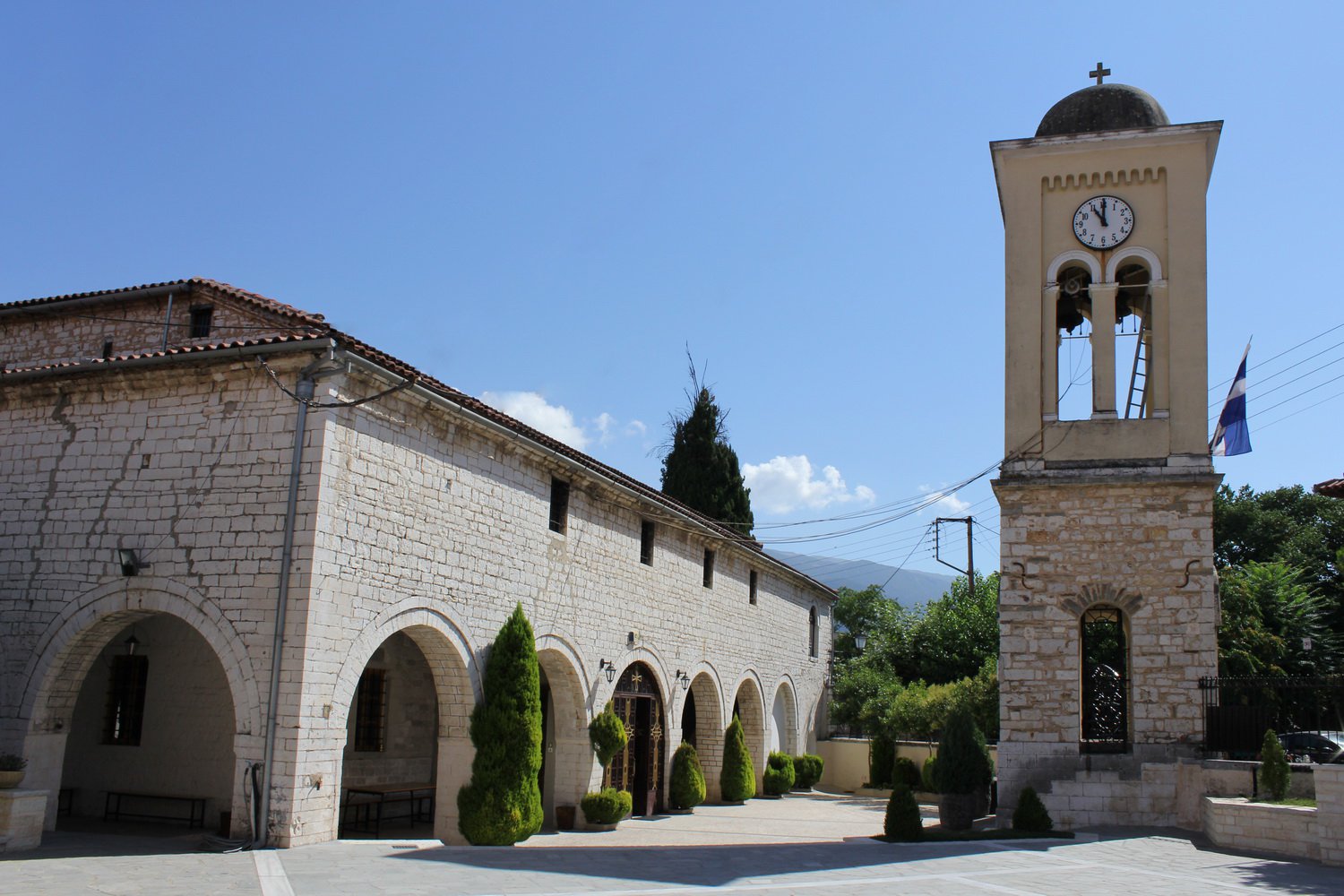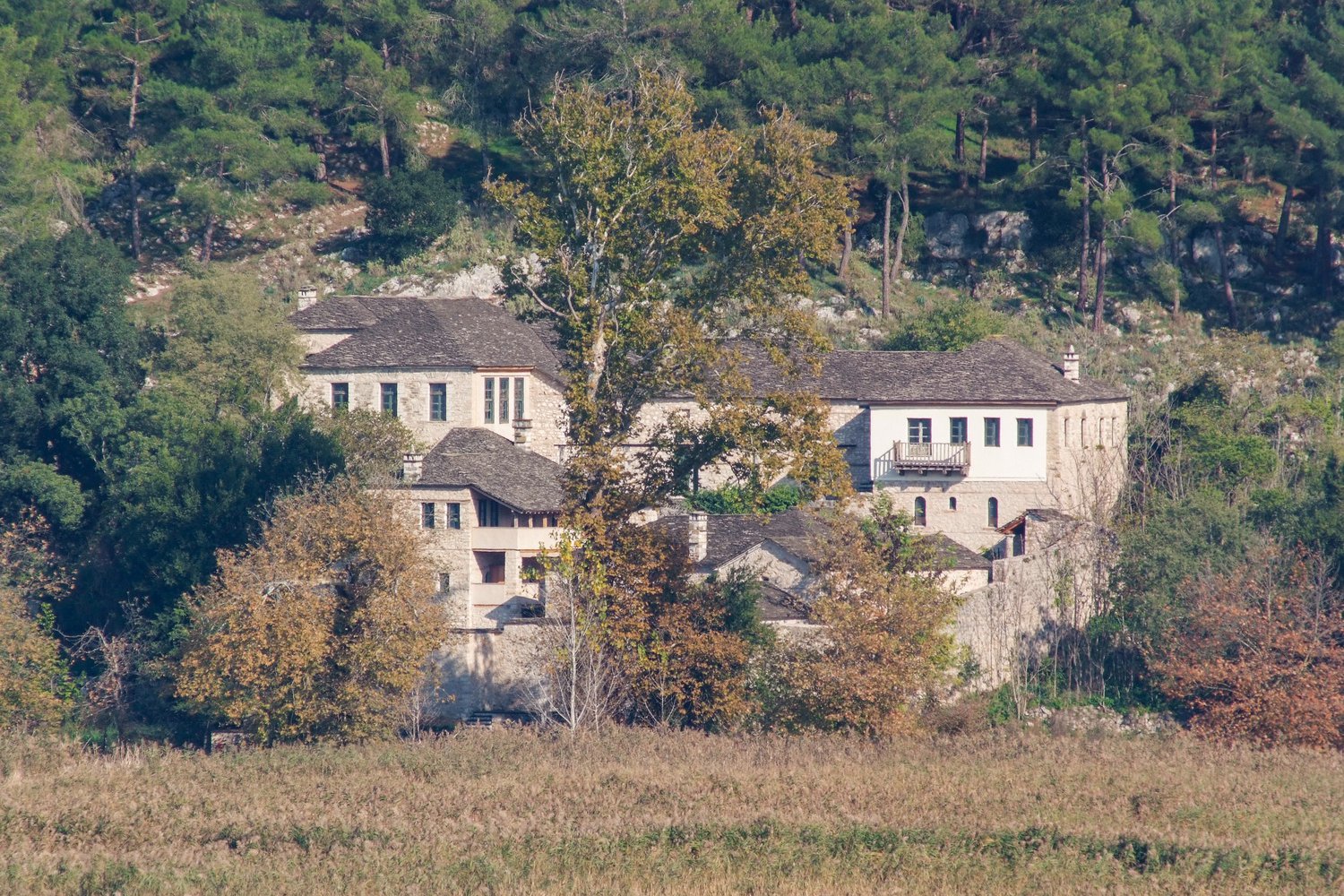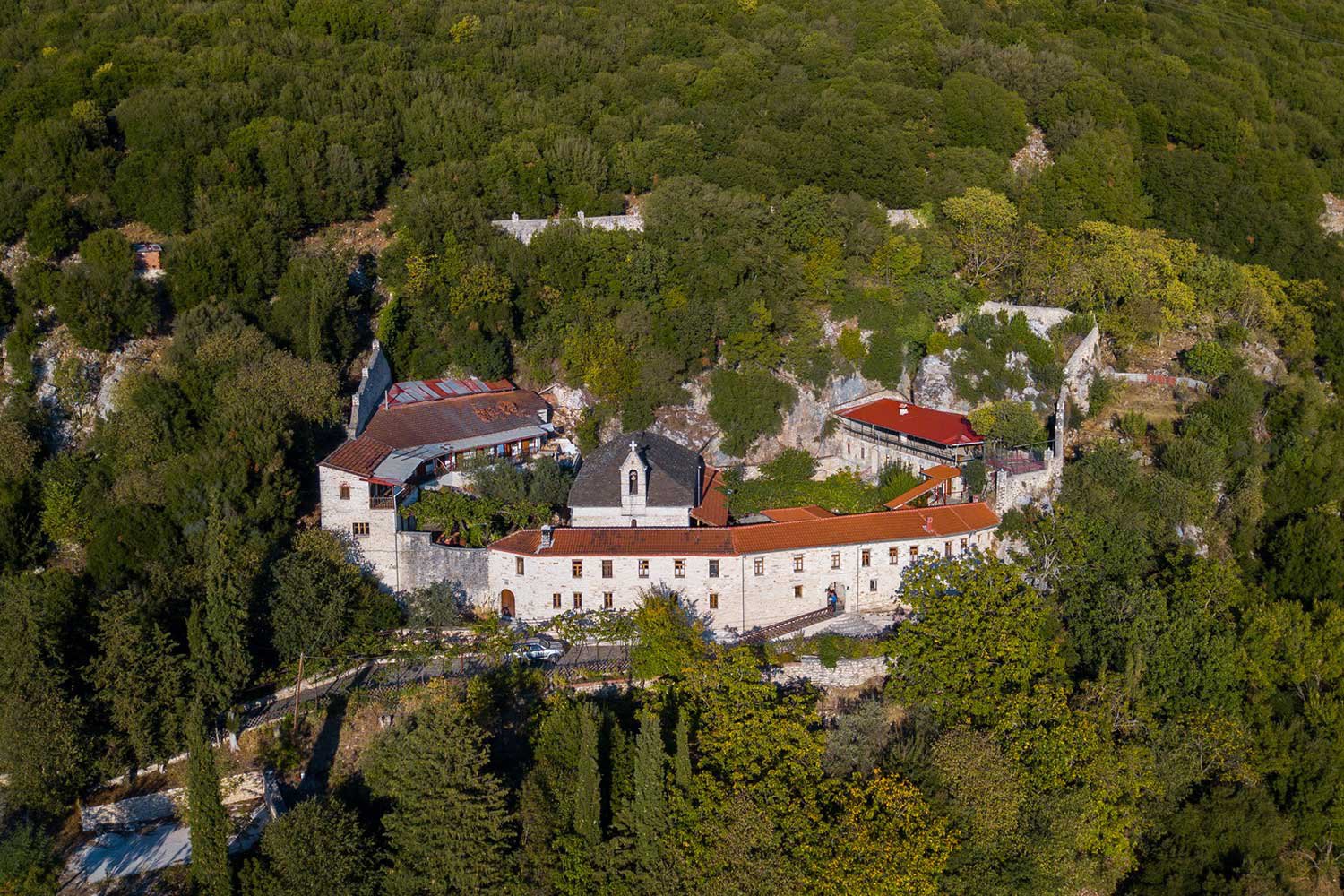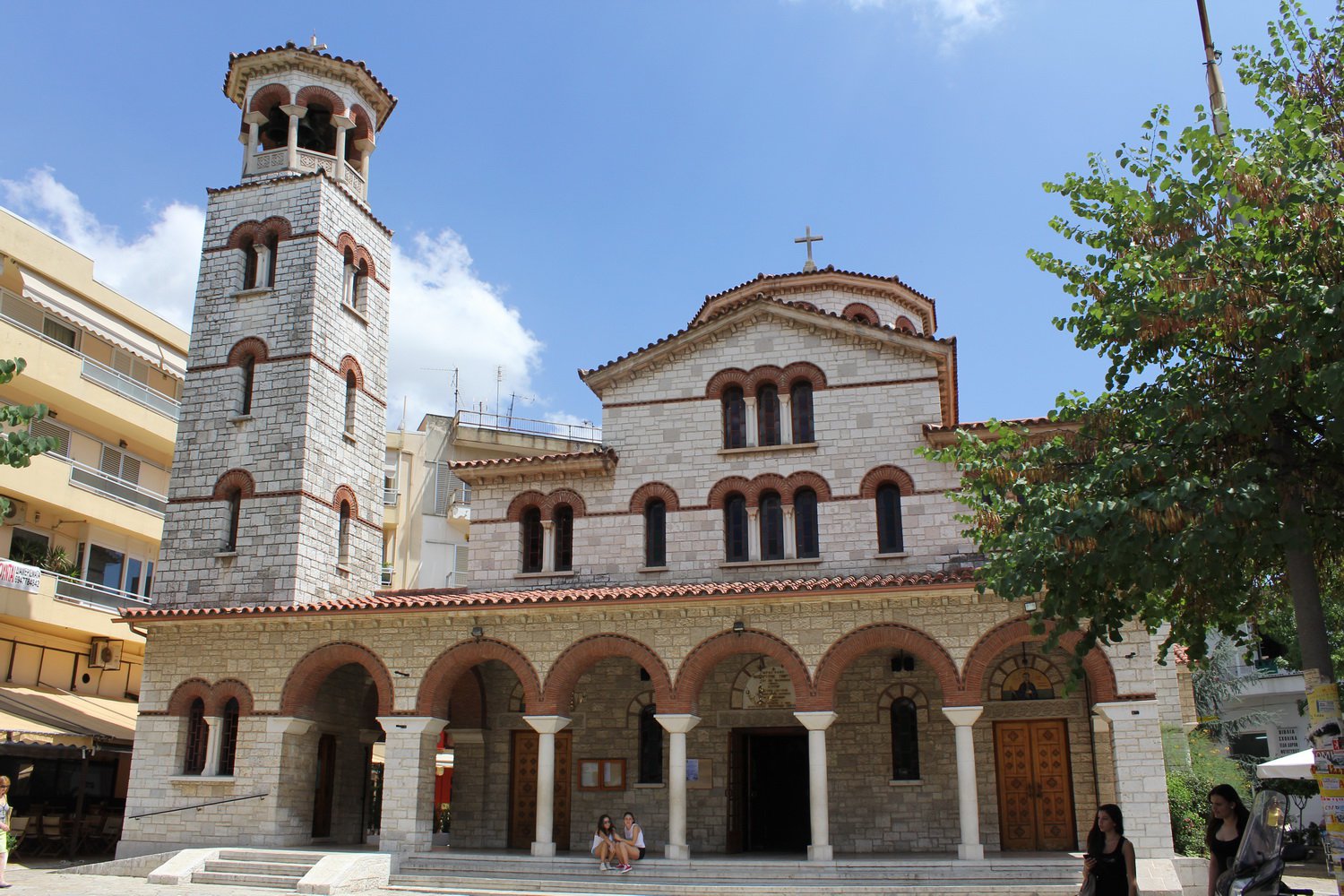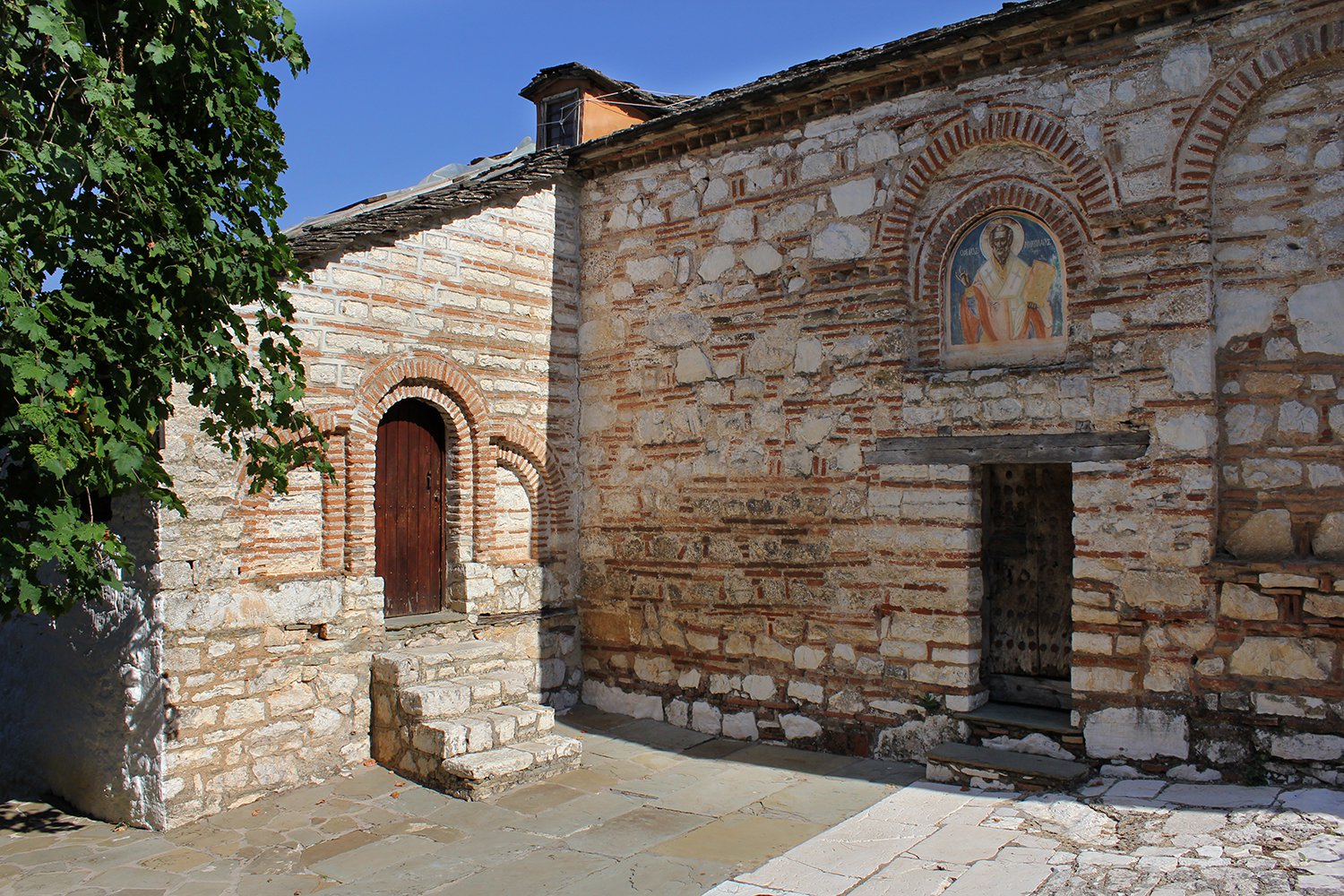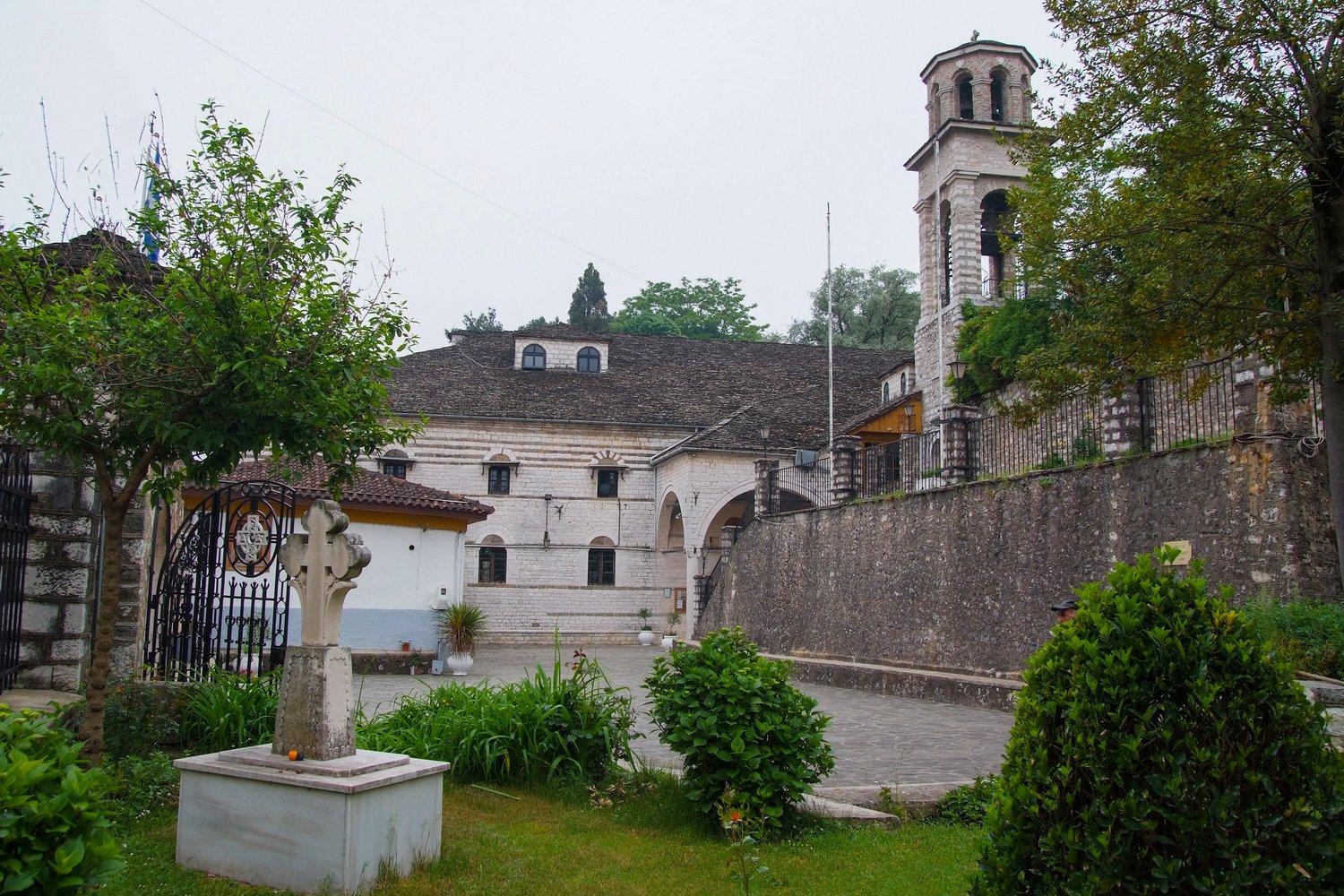Philanthropenon Monastery
It is located on the west bank of the island after leaving the settlement. It is an institution of the House of Philanthropenon, one of the families coming from Constantinople that were settled in Ioannina since times of Michael I Komnenos Doukas. Five members of the family are depicted on the north wall of the exonarthex (1560), as owners of the monastery.
The monastic complex includes the katholikon (temple), the ruined altar and two-storey cells that were built later. It was founded in 1291/2 on the ruins of a pre-existing monastery referred to as "of the revered Iakovos" by Michael Philanthropenos, "priest and great treasurer" of the diocese of Ioannina. In the 16th century, the katholikon was renovated on abbots Neophytos and Joasaph of the Philanthropenon initiative. In 1560 the exonarthex and the paranarthexes were built on the north and south side of the church. The interior of the katholikon is decorated with important frescoes of the 16th century, attributed to important painters (Frangos Katelanos, Frangos brothers and Georgios Kontari). The extensive iconographic programme testifies to the high theological training of the founders and the depiction of seven sages of antiquity reflects the humanist spirit at that time in Ioannina. The iconostasis is a 17th century work with images of various periods.
The monastery was, according to the tradition, an important spiritual institution with a remarkable library and school. The monastery profited by the donations of the expatriates of Ioannina, among them Zotos and Apostolos Tsigaras and the Spanos family, with whose name it was associated.








